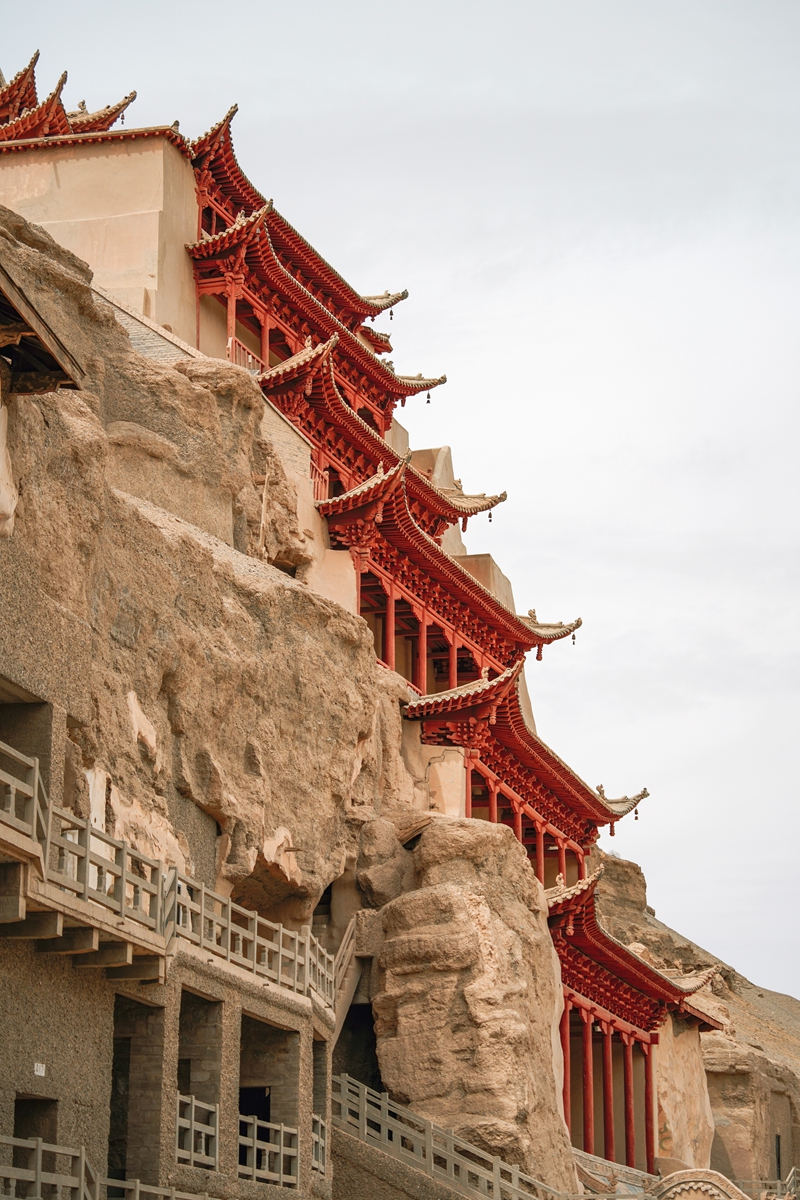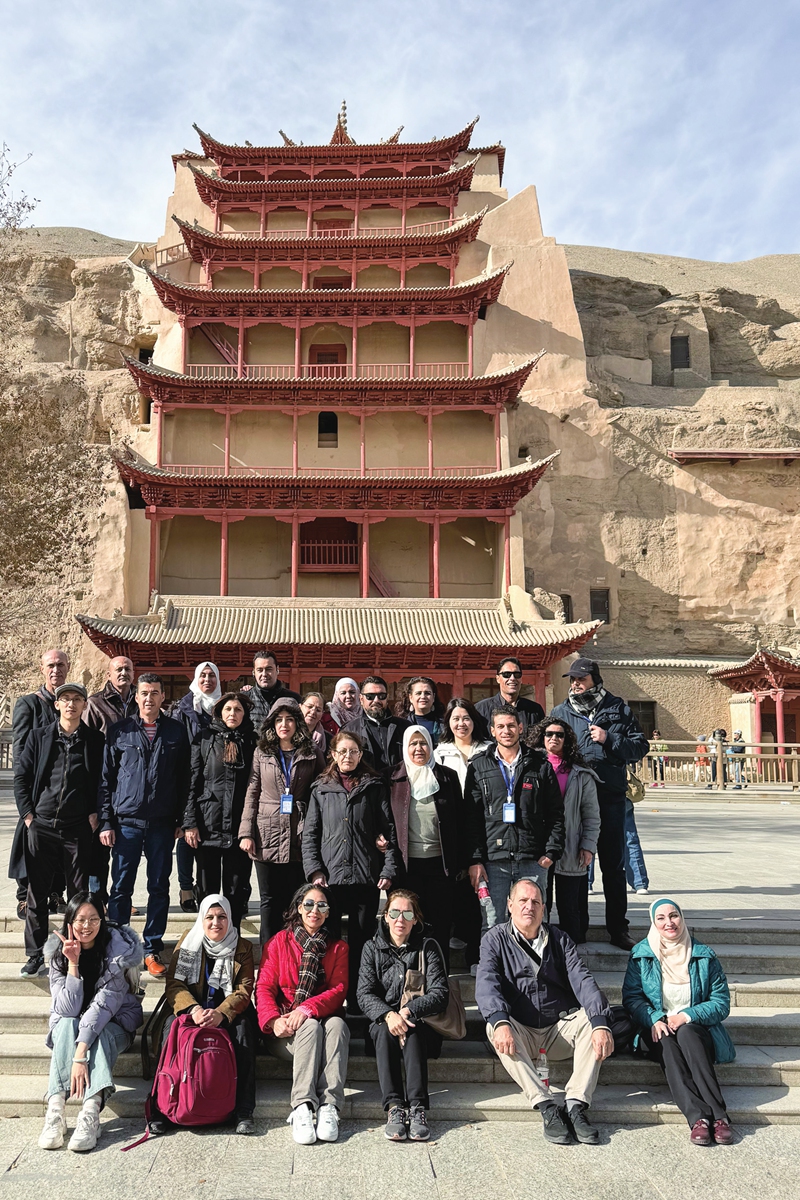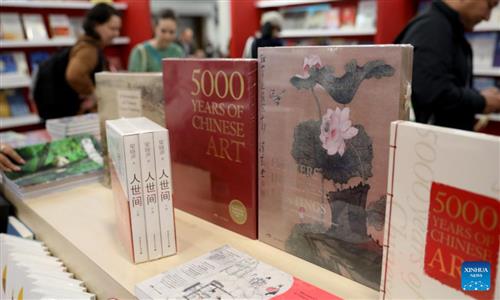ARTS / CULTURE & LEISURE
Preservation of Mogao Caves murals enthralls visiting Syrian delegation
Mutual inspirations

Mogao Caves in Dunhuang Photo: VCG
Hidar Yousef is thrilled to see the famed Mogao Caves and learn about how cutting-edge technologies are used to help preserve the UNESCO World Heritage site."It is a great experience to visit the Caves and see the wall paintings in person, and learn about the technologies used in repairing and monitoring the situation inside the Caves," Yousef told the Global Times.
Yousef, who works at the Directorate-General for Antiquities and Museums (DGAM), a Syrian government-owned agency responsible for protection and excavation activities in Syria's national heritage sites, is among a 24-person Syrian cultural delegation visiting China to explore cultural cooperation opportunities.
Located in the northwestern outskirts of Northwest China's Gansu Province, the Mogao Caves in Dunhuang, once a border city during the Han Dynasty (206BC - AD220), serve as evidence of trans-civilization communications since its inception in 366 AD, as the wall paintings at the site show distinct foreign cultural influence.
Ancient connections
A biblical Psalms written in Syriac was discovered during an archeological excavation expedition at the Cave B53 of Mogao in 1986. Though the original date of publication is not identified on the manuscript, it is believed the handwritten piece dates back to the Yuan Dynasty (1279 - 1368).
Su Bomin, chief of the Dunhuang Academy, which was established in 1944 and now oversees the preservation and management of the Mogao Caves, said that the spread of Dunhuang culture, which itself underlines mutual respect of different civilizations in China's past, also promotes mutual respect among civilizations.
"The dissemination of Dunhuang culture could make people from all over the world understand the prominence of mutual respect, so as to further realize that China, past to present, emphasizes multicultural exchanges and promotes the spirit of learning from each other," Su told the Global Times.
Syrian archeologist Jihad Abu Kahla, director of the Damascus Countryside Antiquities Department, noted that the ancient Silk Road and the expansion of the Mongolian empire also brought Chinese culture to Syria.
"China is a world-leading country in cultural relic protection. There are many rich experiences we can learn thanks to the long-lasting friendship between China and Syria," he told the Global Times through an interpreter.
"In ancient times, the two sides were closely linked through the Silk Road. Now we can rely on the Belt and Road Initiative (BRI) to continue our friendship," Kahla said.
Syria, once a culture and tourism destination, has seen its historical treasures devastated by war.
Hala Emad, a senior official with the Planning and International Cooperation Commission of Syria, said cooperation between China and Syria on culture existed before the war but was halted as cooperation between China and Syria was once limited to humanitarian aid only.
The war has forced cultural practitioners to prioritize the preservation of excavated relics rather than continued exploration to discover new ones, according to Ahmad Dali, director of Damascus at the DGAM.

Syrian officials visit Mogao Caves in Dunhuang, Northwest China's Gansu Province on November 4, 2023. Photo: Courtesy of the Central Academy of Culture and Tourism Administration
Why preservation mattersYu Jiannan, Party secretary of the Central Academy of Culture and Tourism Administration, underlined China and Syria's shared issues in terms of cultural relic preservation.
"China and Syria are both countries with a long history and rich cultural heritage, and the problems in the preservation of cultural heritage, such as human and natural damage, are particularly prominent in both countries," Yu said.
"The exchange and cooperation between cultural relic practitioners in the two countries is very necessary, with a broad prospect for exchanges and cooperation in cultural relic protection."
Echoing this sentiment, Emad said the Syrian international cooperation authority will work out a roadmap of how future cooperation between China and Syria could be implemented.
Yousef has also expressed his strong wishes to see the two countries agree on cooperation programs to help Syria restore the treasures scarred by war.
Syria faces a string of sanctions imposed by the West, which have hindered efforts to alleviate the pains of war.
The country joined the China-proposed BRI in 2022, which is believed to have helped Syria open up broad horizons of cooperation with China and other countries.
Though Syria has also already started the digitalization of its antiquities, techniques used are not as up to date, said Yousef, who works in the digitalization department at the DGAM.
The digitalization of Mogao Caves has massively boosted the dissemination of information about the Mogao Caves worldwide, as the free-access portal "E-Dunhuang" was launched online in 2017, attracting over 20 million visitors worldwide.
The technology has made it possible for the non-movable heritages in the Mogao Caves to be displayed digitally or via replicas, giving visitors a closer look without damaging the fragile murals.
"The role of digitalization will become more and more significant because we are managing an immovable site," Su, the dean of the Dunhuang Academy, told the Global Times.
"With the digitization of the resources, we can create high-resolution replicas of the caves and the murals to show them to audiences around the world."
Preserving cultural relics, whether digitally or physically, could strengthen national identity as well as social cohesion, according to Kahla.
He believes the war has changed the mind-set of the Syrian people, as the preservation of culture has ceased to be a top priority in the face of war-induced crises.
"Heritage protection is identity construction. It refers to the construction of the nation," he added, emphasizing that "the protection of cultural relics also means advocating the importance of inheritance from generation to generation."

